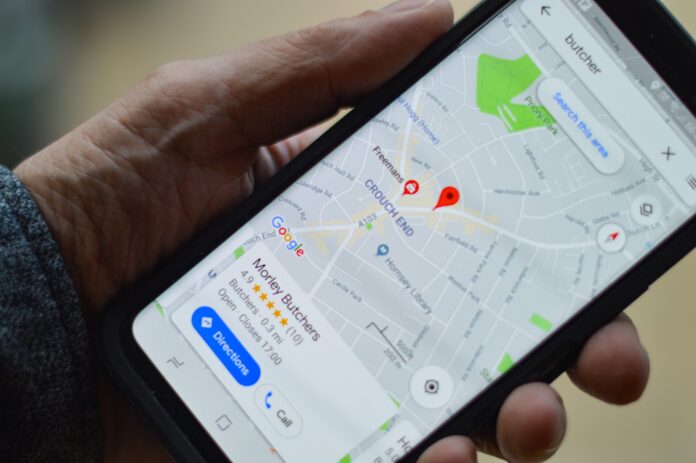Local SEO (Search Engine Optimization) is an essential marketing strategy for businesses aiming to enhance their online visibility and reach a local target audience. It involves optimizing a website and its online presence to improve its ranking in search engine results pages (SERPs) for location-based queries. Local SEO focuses on driving relevant organic traffic to physical stores or local service areas, making it crucial for businesses that rely on local customers. In this article, we will delve into the intricacies of local SEO and discuss ten key factors that contribute to its success.
Local SEO revolves around optimizing various aspects of a website and its online presence to appear prominently in local search results. Search engines like Google prioritize displaying results that are most relevant to a user’s search query and location. Therefore, businesses must ensure that their online assets are optimized for local search, increasing their chances of being discovered by potential customers in their target area.
1. Google My Business (GMB): Claiming and optimizing your GMB listing is a vital first step in local SEO. GMB provides essential information about your business, such as address, phone number, website, hours of operation, and customer reviews. It significantly influences your visibility in Google Maps and local search results.
2. NAP Consistency: NAP stands for Name, Address, and Phone number. Consistency in presenting this information across various online platforms, including your website, GMB, online directories, and social media profiles, is crucial. Inconsistencies can confuse search engines and negatively impact your local search rankings.
3. Local Keywords: Conduct thorough keyword research to identify relevant keywords with local intent. These keywords should be incorporated naturally into your website content, meta tags, headings, and URLs. By optimizing your website for local keywords, you increase your chances of ranking higher for location-specific searches.
4. Localized Content: Creating high-quality, informative, and engaging content targeted towards your local audience can significantly impact your local SEO efforts. Develop content that caters to local interests, events, news, and specific geographical aspects of your target area. This will help attract local visitors and establish your business as a local authority.
5. Online Reviews: Positive online reviews play a crucial role in local SEO. Encourage your satisfied customers to leave reviews on platforms such as Google, Yelp, Facebook, and industry-specific directories. Respond to both positive and negative reviews promptly and professionally. Search engines take reviews into account when determining local search rankings.
6. Citations and Online Directories: Citations are online mentions of your business name, address, and phone number (NAP) on various websites, online directories, and local business listings. Ensure that your NAP information is accurate and consistent across these platforms. Popular directories like Yelp, Yellow Pages, and Angie’s List can significantly impact your local visibility.
7. Local Link Building: Acquiring high-quality backlinks from authoritative local websites can boost your local SEO efforts. Partnering with local organizations, sponsoring events, participating in local initiatives, and earning mentions from reputable local publications can help attract relevant local traffic and improve your search rankings.
8. Mobile Optimization: With the increasing use of mobile devices, optimizing your website for mobile is crucial for local SEO. Ensure that your website is responsive, loads quickly, and offers a seamless browsing experience on mobile devices. Mobile-friendliness is also a ranking factor for Google’s mobile search results.
9. Schema Markup: Implementing schema markup, also known as structured data, helps search engines better understand your website’s content. Local businesses can utilize local business schema markup to provide search engines with detailed information about their business, including address, phone number, business type, hours of operation, and customer reviews.
10. Local Social Media Engagement: Engaging with your local audience on social media platforms can significantly boost your local SEO efforts. Actively participate in local community groups, share relevant content, respond to comments and messages, and encourage user-generated content. Engaging with your audience on platforms like Facebook, Instagram, Twitter, and LinkedIn can increase brand awareness, drive local traffic to your website, and improve your overall online visibility.
Local SEO is a critical aspect of digital marketing that focuses on optimizing a business’s online presence to attract local customers. It plays a vital role in helping businesses gain visibility in search engine results for queries related to their products or services in specific geographical areas. With the increasing reliance on search engines to find local businesses, mastering local SEO techniques has become essential for businesses of all sizes.
Local SEO refers to the strategies and tactics implemented to improve a website’s visibility in local search results. It involves optimizing various aspects of a website, including content, keywords, metadata, and website structure, to ensure that it appears prominently in search engine results pages (SERPs) when users search for relevant terms within a specific location. By effectively leveraging local SEO, businesses can drive targeted traffic to their websites, increase brand visibility, and generate more foot traffic to their physical stores.
To implement an effective local SEO strategy, businesses need to start by claiming and optimizing their Google My Business (GMB) listing. GMB is a free tool provided by Google that allows businesses to create a profile, provide essential information such as address, phone number, website, hours of operation, and manage customer reviews. Optimizing the GMB listing involves providing accurate and consistent information, selecting the appropriate categories, adding compelling photos, and encouraging customers to leave reviews.
One of the key factors in local SEO is ensuring consistency in NAP (Name, Address, Phone number) across all online directories and platforms. Consistent NAP information helps search engines associate the business with the correct location and builds trust with both search engines and users. In addition to NAP consistency, businesses should also focus on optimizing their website’s on-page elements for local SEO. This includes including relevant keywords in the website’s content, meta titles, meta descriptions, and header tags.
When optimizing website content for local SEO, it is essential to create informative, engaging, and locally relevant content. This could include creating location-specific landing pages that highlight the unique offerings or services available in each location. By tailoring the content to the local audience, businesses can better connect with potential customers and improve their chances of appearing in relevant local search results.
Apart from on-page optimization, local SEO also involves building high-quality backlinks from reputable local websites. This can be done through strategies such as guest blogging, partnering with local influencers, or sponsoring local events. The more authoritative and relevant backlinks a website has, the higher its chances of ranking well in local search results.
In recent years, the importance of online reviews in local SEO has grown significantly. Positive customer reviews not only enhance a business’s reputation but also play a crucial role in influencing potential customers’ decisions. Encouraging customers to leave reviews on platforms like Google, Yelp, or industry-specific review sites can significantly impact a business’s local SEO efforts.
Local SEO is closely tied to mobile optimization since an increasing number of users are accessing the internet through mobile devices. Therefore, it is essential for businesses to ensure that their websites are mobile-friendly and provide a seamless user experience across different devices. Mobile optimization includes having responsive web design, fast loading times, and easy-to-navigate interfaces.
To stay ahead in the competitive local SEO landscape, businesses should also leverage local business directories and citation sites. These directories, such as Yellow Pages, Yelp, and Bing Places, not only provide additional online visibility but also help search engines verify a business’s credibility and relevance to a particular location.
Furthermore, businesses can take advantage of local schema markup to provide search engines with structured data about their business, such as operating hours, address, contact information, and customer reviews. Schema markup helps search engines understand and display relevant information in search results, increasing the chances of attracting local customers.






















